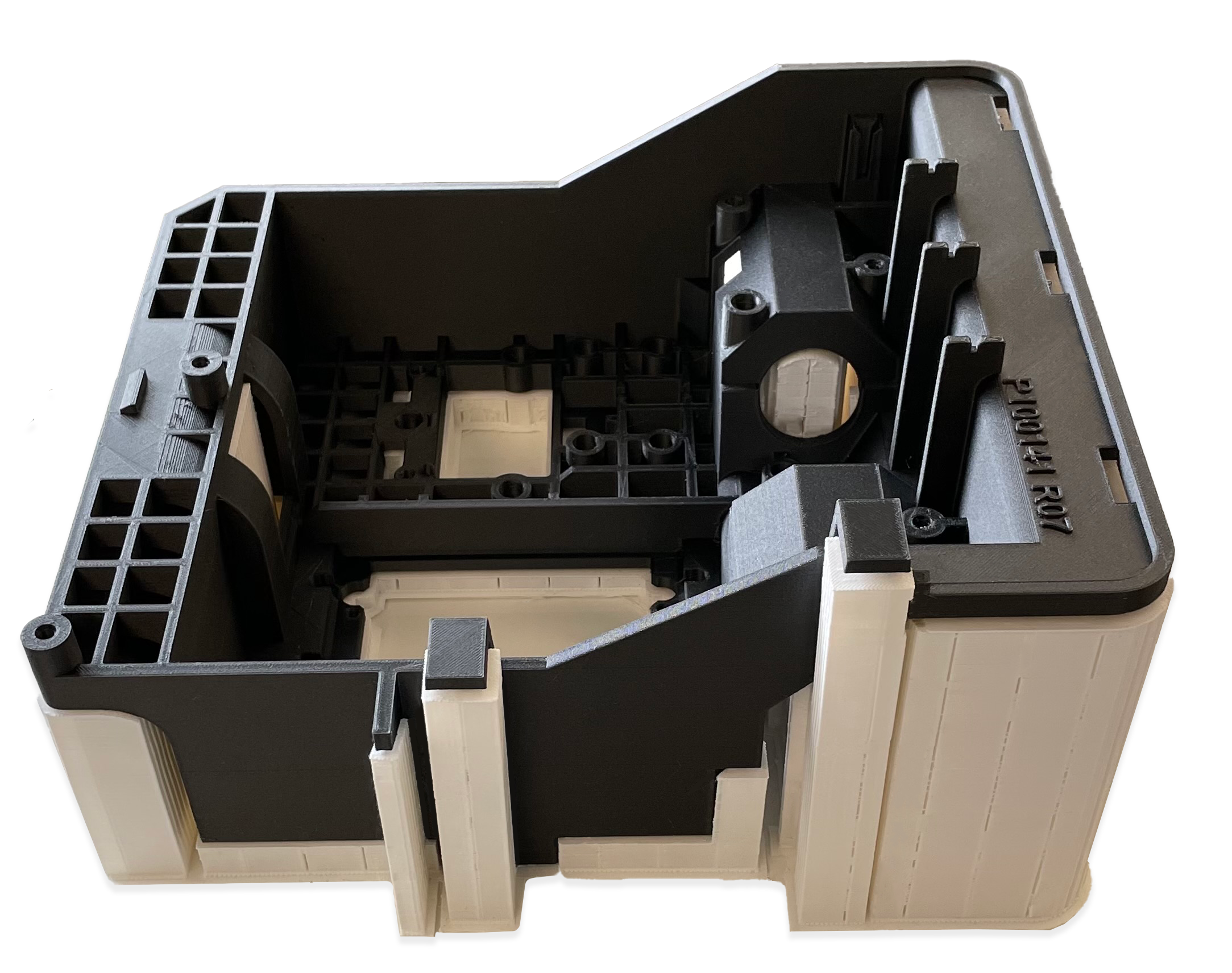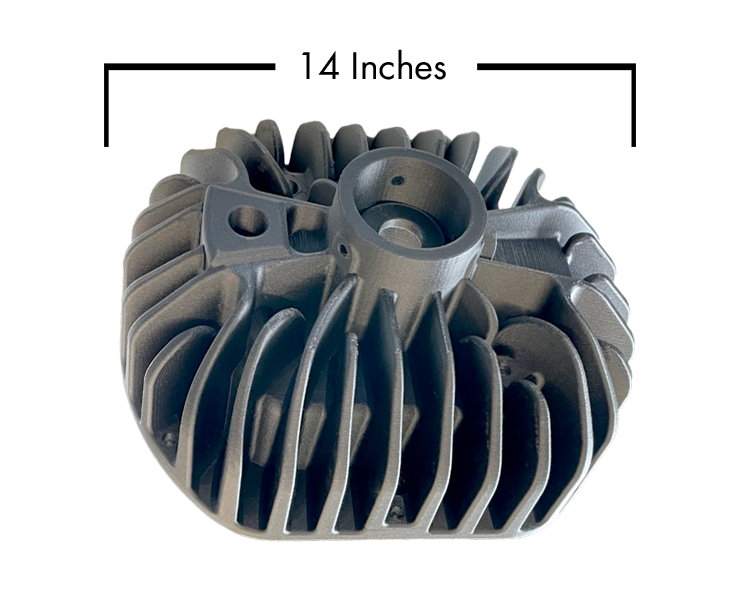Boston-based 3D printer manufacturer RIZE hit a new milestone with its latest RIZE 7XC large-format 3D printer, to be shipped starting in April 2021. The sustainable fused filament fabrication (FFF) dual nozzle machine began beta testing in 2020 and is expected to provide massive print sizes for parts, tools, jigs, and fixtures by leveraging the company’s Rizium composite materials.
The RIZE 7XC launched in July 2020 and is now available to customers starting at $19,995. The company said that its new multi-material platform delivers a time to part advantage with a class-leading build volume of 370 x 390 x 450mm and higher thermal dimensional stability while helping manufacturers ensure agile supply chains to sustain them in the new post-pandemic normal. The company stated that it would enable the rapid creation of large parts and complex geometries on demand, far faster and at a lower cost than molding, milling, and casting.
“The RIZE 7XC makes additive manufacturing capability rugged enough for industrial 3D printing needs, yet safe and affordable, too,” said Andy Kalambi, CEO of RIZE. “Finally, manufacturers can apply the promise of additive manufacturing to creating agile and distributed supply chains where the ability to generate a needed part, tool, jig or fixture takes a fraction of the time of traditional processes.”
Developed jointly through a strategic partnership with South Korean 3D printer manufacturer Sindoh, the RIZE 7XC leverages Sindoh’s 7X large-format dual-nozzle 3D printing platform, along with RIZE’s Rizium composite materials, including Rizium Glass Fiber and Rizium Carbon Fiber. The RIZE 7XC is the second deliverable of the RIZIUM Alliance, a new collaboration between RIZE and industry partners, like Sindoh, to drive safer, more sustainable 3D printing. The first product was the RIZE 2XC, which was made with a redesigned Sindoh dual-extrusion 3D printer, which can run engineering-grade RIZIUM materials that are moisture-resistant, recyclable, and zero-emission.
The two companies announced their partnership in February 2020 as an opportunity to open up new markets and accelerate the adoption of what they consider safe, sustainable 3D printing. Some of the world’s largest manufacturers already rely on Sindoh’s 3D printing solutions, but working with RIZE’s innovative technology was expected to enable the company to reach more market segments, including the sub-$5,000 range of 3D printers. At the time, Sindoh’s CEO, Byoungbag Lee, revealed that RIZE’s “unique technology” would upgrade the Korean 3D printers, enabling them to penetrate the industrial and education segments.
As the fourth member of RIZE’s family of 3D printers, the latest model was developed with the company’s health and safety commitment in mind, whereby printing can be performed anywhere without ventilation. The firm said the 7XC’s composite-enhanced dual extruders enable a Z-resolution of 50 microns suitable for demanding geometries and a superior surface finish. Features such as active auto-leveling and internal insulation also help assure superior mechanical properties. Simultaneously, RIZE’s purported commitment to sustainability means minimal post-processing, with supports that peel away quickly and easily without chemicals or tools, states the company.
The objective with RIZE 7XC was to make large-format additive manufacturing (AM) easy, durable and efficient, which according to the company’s first beta customer is quite possible. An unnamed major electronics manufacturer based out of Mexico has been using the new platform to create large jigs called nests for its automotive electronics assembly processes. These parts need high strength and durability, suggested Roberto Jacobus, the General Director at Industrias VIWA, a manufacturing and additive technology provider that sells RIZE printers in the Mexican city of Jalisco.
The nests reportedly measured 32 x 28 cm and were created in just over 2 hours using the RIZE 7XC 3D printer and RIZIUM carbon fiber material. The nests used to take over a week to make with traditional machining processes, at far greater costs, and have already outlasted the previous jigs made with ABS material on another 3D printer. Jacobus also said that since new jigs inevitably undergo design changes after testing, printing them on the 7XC is poised to significantly accelerate the introduction of new products and improvements in the customer’s manufacturing line.
Collaboration is key to the success of the 3D printing industry. For the technology to go mainstream and overcome its challenges and limitations, companies, organizations, and government agencies are highly encouraged to work together. Collaborations often result in better workflows, lower costs, and increased turnaround times and are usually a win-win situation for everyone involved. Companies tend to gain access to innovative processes, techniques, materials, hardware and software, and so much more.
Subscribe to Our Email Newsletter
Stay up-to-date on all the latest news from the 3D printing industry and receive information and offers from third party vendors.
You May Also Like
Precision at the Microscale: UK Researchers Advance Medical Devices with BMF’s 3D Printing Tech
University of Nottingham researchers are using Boston Micro Fabrication‘s (BMF) 3D printing technology to develop medical devices that improve compatibility with human tissue. Funded by a UK grant, this project...
3D Printing Webinar and Event Roundup: April 21, 2024
It’s another busy week of webinars and events, starting with Hannover Messe in Germany and continuing with Metalcasting Congress, Chinaplas, TechBlick’s Innovation Festival, and more. Stratasys continues its advanced training...
3D Printing Webinar and Event Roundup: March 17, 2024
It’s another busy week of webinars and events, including SALMED 2024 and AM Forum in Berlin. Stratasys continues its in-person training and is offering two webinars, ASTM is holding a...
3D Printed Micro Antenna is 15% Smaller and 6X Lighter
Horizon Microtechnologies has achieved success in creating a high-frequency D-Band horn antenna through micro 3D printing. However, this achievement did not rely solely on 3D printing; it involved a combination...































